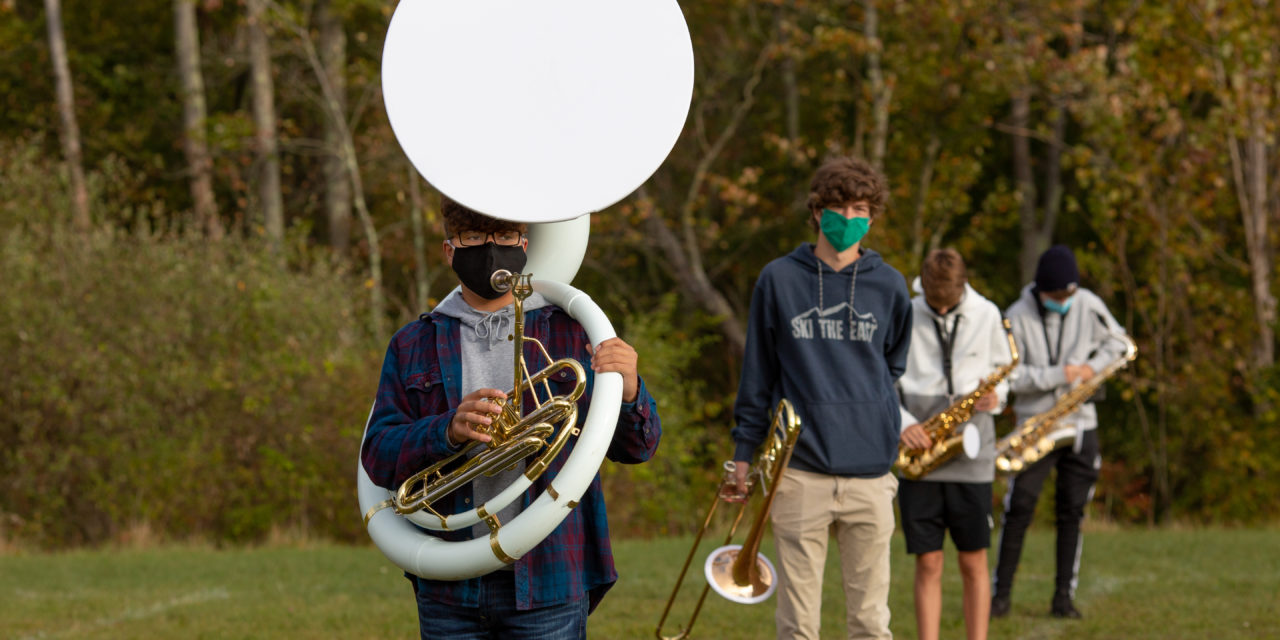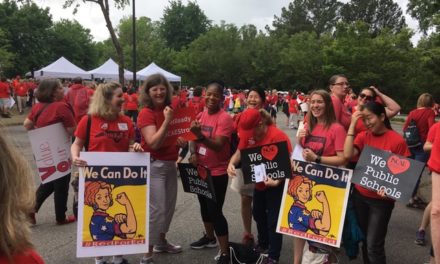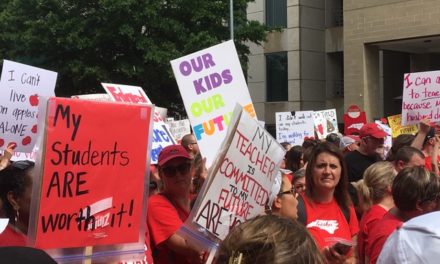The often hidden reality of rural schools in America is that a higher percentage of students in rural areas live in poverty compared to metro school districts, according to a 2021 profile of rural schools done by Ohio teacher Daniel Bailey for Edutopia. These students also tend to face unique challenges, including limited access to medical care and ongoing fallout from the opioid crisis that has significantly impacted rural communities across the country.
“Rural districts are an often-overlooked part of the complex American education system,” Bailey noted, which is a point that was also echoed in a 2020 article by New York Times education reporter Erica Green, who wrote that despite the fact that one in seven U.S. students attends school in a rural district, these often geographically large school systems have “long been considered the most underfunded and ignored in the country.”
These revelations about rural schools aren’t news to Deanna Hron, a longtime employee of the Deer River, Minnesota, school system, who is well aware of the challenges facing rural students. When she began her career in Deer River in the 1980s, working as an elementary school teacher, she observed that many of her young students showed up to school without their basic needs being met, including essentials such as dental care, food, and reliable transportation.
She soon realized that it wouldn’t be possible to meet all those needs solely within the classroom and did what she could to help students and families access resources within the town of Deer River and Itasca County, its home base.
These days, Hron is largely credited by colleagues with being the life force behind the district’s 2016 adoption of a full-service community schools model. Since then, Deer River students and staffers have had more tools in place through this community schools approach, which prioritizes not only the academic needs of kids but also the social, emotional, and physical well-being of the whole community.
Adoptions of the community schools model are often associated with urban school systems such as New York City, Los Angeles, and Cincinnati, but this approach offers substantial benefits for rural districts whose needs are often overlooked by politicians and policymakers.
A quick glance at demographic data for the Deer River school district indicates that the need for such comprehensive support clearly exists.
Deer River Public Schools is a rural district serving approximately 900 students in the densely forested, lake-filled reaches of northern Minnesota. The town of Deer River has an equal number of residents—around 900—but the school district pulls kids in from the surrounding towns and covers more than 500 square miles, boosting both its enrollment numbers and the complexity of issues the school district has to tackle.
Also, the school district is located within the Leech Lake Reservation, which is home to nearly 10,000 members of the Leech Lake Band of Ojibwe, and is anchored by the breathtaking expanse of Leech Lake, which boasts nearly 200 miles of picturesque shoreline.
Approximately one-third of Deer River’s student population is Native American, and therefore these students belong to a demographic group that is known to be consistently underserved by Minnesota’s public schools.
More than two-thirds of the district’s K-12 students live in poverty, according to federal income guidelines; 85 Deer River students are listed as being homeless. On top of that, almost 25 percent qualify for special education services.
It’s numbers like these, along with the faces and names behind them, that prompted Hron and her fellow Deer River staffers to seek access to more resources through the community schools approach, an effort that was already showing promise in the nearby Duluth public school system.
‘Fishing Poles, Beds, and Bikes’
“The momentum for the full-service model started five or six years ago,” Hron says, right after district employees successfully lobbied the community for a $10.5 million referendum.
The injection of taxpayer dollars was needed to upgrade the town’s elementary school, and, in order to sweeten the pot, Hron and her colleagues decided to pitch the referendum as a way to add more services to the school building.
“We included a senior center and an early childhood wing in our plans,” she says, noting that these additions made the project “easier to sell to the public.”
It also helped lay the groundwork for what came next: a grant to bring the full-service community schools model to Deer River. In 2015, the Minnesota state legislature authorized $500,000 in one-time startup funds for school districts interested in exploring the community schools approach, and Hron and other Deer River employees jumped at the chance to bring even more services to area students and their families.
The district’s longtime superintendent, Matt Grose, was supportive of the idea, Hron recalls, and had already helped bring mental health services to the area’s schools. The statewide teachers’ union, Education Minnesota, also pitched in with programmatic support and startup resources.
Although there was support for the full-service model in Deer River, thanks in large part to Grose’s leadership, it wasn’t always easy to get it off the ground. For one thing, while money from the initial implementation grant lasted eight months in Deer River and helped put the full-service community schools model in place, it wasn’t enough to sustain it.
District personnel then used some general education fund dollars to cover costs associated with the program’s implementation until a federal grant opportunity arose in 2019. The Department of Education authorized grants worth millions of dollars for full-service community schools throughout the U.S. that year, and, while Deer River applied but wasn’t selected then, in 2020 the district did receive a five-year grant worth $2.2 million.
The money was a “pie in the sky” dream, says Hron’s colleague, Betsy Johnson, and was made all the more substantial thanks to an additional $2.4 million from area organizations such as the Leech Lake Band of Ojibwe.
Johnson has worked in the Deer River area since 2007, mostly through a public health program operated by the University of Minnesota Extension. With a background in health and nutrition, Johnson was already serving on the board of Deer River’s full-service community schools, when she laughingly says she “failed at retirement” and started working as a grant project manager for the district.
In her role, Johnson also serves as the family resource coordinator, connecting families to the various services available to them through the full-service community schools model.
These services have included access to essential resources during the pandemic, when Deer River staff members delivered groceries to families in need and conducted home visits to make sure students—especially those who were not regularly attending online learning classes—were okay.
An article in the Grand Rapids Herald-Review highlighted Deer River’s full-service model, noting how staff provided other specific items requested by families during the COVID-19 shutdown, including “fishing poles, beds, and bikes.”
‘I Was One of Those Kids’
Positions like the one Johnson holds are possible thanks to the 2020 federal grant Deer River won, and the money also allowed the district to expand this model to the high school level.
There, 2015 Deer River High School graduate Kole Schultz acts as the site coordinator, working directly with students to keep them connected and on track. There is an Anishinaabe education room in the school that is geared toward the needs of the school’s Native American students, who may want a place of their own where they can find a friendly face or perhaps an afterschool snack or two.
“I was one of those [impoverished, with limited resources,] kids, and I know how delicate things can be,” Schultz says, when thinking of the issues faced by these kids, including generational trauma and limited access to modern-day essentials such as consistent broadband services. Schultz left Deer River after graduation but came back when he saw an opportunity, through the site coordinator position, to “help and give back.”
The pandemic is making his on-site support more necessary than ever.
In 2020, COVID-19 hit Deer River hard, exacerbating longstanding challenges to the area’s health care system—thanks, in part, to the ongoing opioid epidemic—and disrupting the vital cashflow brought to the area through its tourism industry.
The school district has also been grappling with fallout from the shutdown of in-person learning, which Johnson says led to a rise in chronic absenteeism among students. Although the district was able to implement hybrid instruction for most of the 2020-2021 school year, meaning students were not required to be online full time, she estimates that around 30 percent of kids did not consistently show up to school throughout the year.
This happened across the country, too, with Education Week reporting that student absenteeism rates doubled during the pandemic. These disruptions are likely to continue into the 2021 school year in Deer River and elsewhere, as the spread of the Delta variant casts an uncertain light on back-to-school plans.
‘Heading Into a Challenging New Year’
“We are heading into a challenging new year,” Johnson acknowledges. It will be important to reestablish routines and expectations, she notes, while also stating that many area families are dealing with not only the pandemic but also an uptick in drug overdoses and suicides.
What she wants most for her community is for them to know that the full-service community schools model is intended to be a source of support for everyone in the area, no matter what they might need. Hron remembers a kindergartner whose academic work soared after she received much-needed on-site dental care. Johnson recalls helping an elderly woman access Depend undergarments when she couldn’t get to the store on her own.
These seemingly small services are actually essential, both women note, especially in a far-reaching rural community like Deer River. The nearest store might be a 10 or 15-minute drive away, and that store is likely to be a convenience store—not a cheaper, more robustly stocked grocery outlet. Even more important, perhaps, is the fact that many area residents do not have a reliable car at their disposal.
“My hope is that our vision for this full-service community school includes all people in [the] Deer River [district] who might need something,” Johnson states.
She and her fellow staff members appear to be off to a good start, and the model they’ve implemented could serve as an example of the community-changing potential of the full-service community schools in both urban and rural districts.
Sarah Lahm is a Minneapolis-based writer and researcher. Her work has appeared in outlets such as the Progressive and In These Times. Follow her on Twitter @sarahrlahm.
(Photo by Allison Shelley/The Verbatim Agency for EDUimages, CC BY-NC 4.0.)






Recent Comments